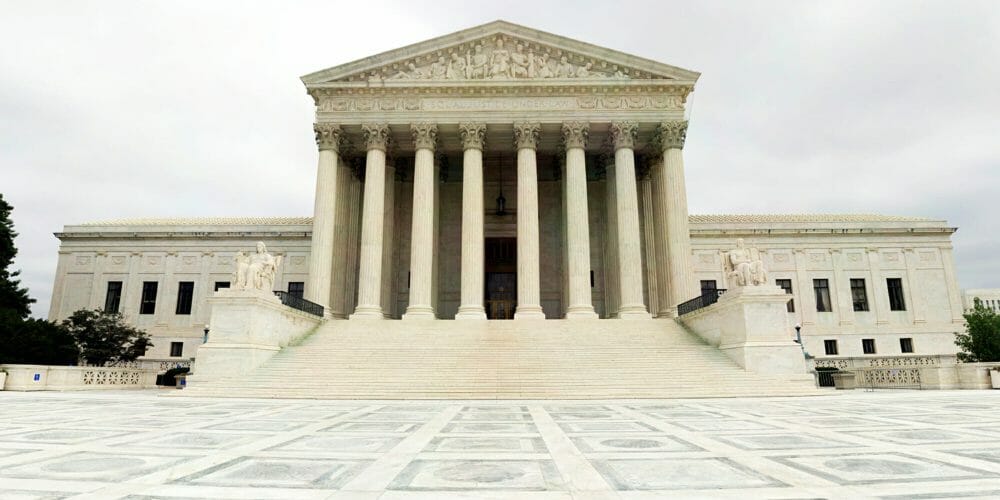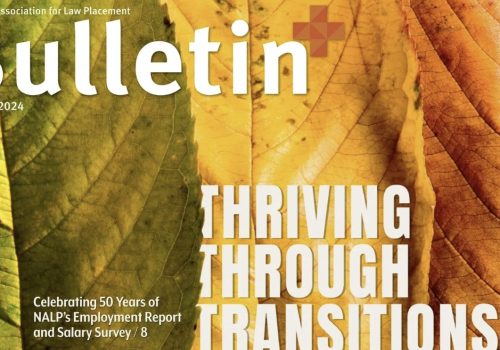Street Law’s Review of the 2019 SCOTUS Term: Stats, Highlights, and Blockbuster Decisions

Share this Article
—By Lee Arbetman
The Supreme Court’s October 2019 Term was one for the ages. Regardless of one’s politics there were decisions to love (or at least like) and decisions to hate (or at least disapprove of). A few aspects of the Term followed patterns that have been established for years:1
- More cases came from the Ninth Circuit than from any other lower court, and the Supreme Court reversed lower court decisions 67% of the time.
- Justice Kavanaugh and Chief Justice Roberts agreed on outcomes 93% of the time as did Justices Breyer and Ginsberg.
- Justices Ginsberg and Thomas agreed least often—47% of the time.
- Despite the polarized nature of the Court’s opinions in some of its cases, the Chief Justice agreed with each of the other justices at least 70% of the time and was in the majority in an astounding 97% of the cases.
But many aspects of the Term were unique. The Term began on schedule the first Monday in October, but the Court didn’t put out its last opinion until July 9th, the latest date in recent memory. The Chief Justice managed to keep to the Court’s regular argument schedule while also presiding over the impeachment trial of President Trump in the Senate in January. The coronavirus pandemic closed the Court in March, and both the March and April argument sessions were postponed. This was the first postponement of an argument session since October 1918 when the Spanish flu led to a temporary Court closure.
Ten of the cases from the March and April argument terms were heard in May via telephone, and the public was able to hear those arguments in real time. A highlight—or perhaps a lowlight—of the live oral arguments was the distinct sound of a toilet flushing. Unlike the random way that questioning proceeds during in-person oral arguments, the justices asked questions in turn based on seniority during the telephonic arguments. Justice Thomas, known for typically remaining silent during oral arguments, took his turn and asked questions. Presumably the justices and the advocates will be eager to return to in-person arguments once public health conditions permit. According to Dean Erwin Chemerinsky of UC Berkeley School of Law, when all was said and done, the Court decided 53 cases after full briefing and oral argument. This was the smallest number of decisions since American Civil War times (1862).2
In terms of the decisions themselves, there was a large number of high-profile cases. While some of the cases didn’t fall along what some might consider the traditional liberal/conservative axis, many of the cases did draw the usual alignment of justices, and the Chief Justice was the deciding vote—or the “swing justice”—in most of the close cases.
A potentially huge Second Amendment case ended in a fizzle. The city of New York had passed a rule severely limiting where residents could travel with their guns. Gun owners challenged this rule on Second Amendment grounds, but lower courts upheld the rule. After the Supreme Court granted review but before the case was argued, the city of New York changed the rule. The Court determined after oral argument that the case was moot. (See Street Law’s teaching materials on New York State Rifle and Pistol Association v. City of New York.)
The Court heard two “faithless elector” cases, one from Washington and the other from Colorado. In a unanimous decision, the Court ruled that a state can enforce an elector’s pledge to support their party’s nominee. (Access Street Law’s teaching materials on Chiafalo v. Washington and Colorado v. Baca, and watch our webinar on these cases with guest legal expert Zack Tripp.)
On the last day of the Term, the Court handed down the two decisions dealing with access to President Trump’s financial records. The cases were Trump v. Vance and Trump v. Mazars. By a 7–2, with majority opinion written by the Chief Justice, the Court ruled in both cases that the president does not have absolute immunity from legal processes seeking information from financial institutions he does business with. Both cases were returned to lower courts for further proceedings. In Mazars, Congress was seeking access to President Trump’s financial records as part of an oversight investigation. The Chief Justice wrote that in that instance separation of powers concerns were relevant and Congress would have to show an important reason for seeking the information. In addition, the burden on the presidency of complying could also be considered.
Liberals celebrated several of the Court’s decisions this term. The Court analyzed a Louisiana law requiring a doctor to have admitting privileges at a hospital within 30 miles in order to perform abortions in June Medical Services v. Russo. In a decision by Justice Breyer, the Court determined that this law was unconstitutional. But the Chief Justice wrote separately to say that he reached that conclusion only on stare decisis grounds, as the law was virtually identical to a Texas law the Court had overturned just a few years earlier in Whole Women’s Health v. Hellerstedt. (See Street Law’s teaching materials on June Medical Services and Whole Women’s Health.)
In Bostock v. Clayton County, Georgia/Altitude Express v. Zarda and Harris Funeral Homes v. EEOC and Aimee Stephens, the Court ruled that Title VII of the Civil Rights Act of 1964 prohibits employment discrimination based on sexual orientation or gender identity. Justice Gorsuch wrote this 6–3 opinion. (Access Street Law’s case materials on Bostock/Zarda and Harris Funeral Homes, and watch our webinar on these cases with guest legal expert Elizabeth Prelogar.)
In Department of Homeland Security v. Regents of the University of California, the Court found that President Trump’s rescission of DACA was arbitrary and capricious, in violation of the Administrative Procedure Act. The Court expressly acknowledged that the president could rescind DACA, but it held that this effort to rescind it was not lawful. The Chief Justice wrote this 5–4 decision.
Conservatives were successful in a number of cases this term, most notably those involving religious liberty claims. In Espinoza v. Montana the state had passed a law giving parents who sent their children to a non-public school (including religious schools) a $150 tax credit. The Montana Supreme Court overturned the law, finding that it violated a provision of the state constitution forbidding government aid to religion. In a 5–4 opinion by the Chief Justice, the Court ruled that the state supreme court’s decision violated the First Amendment’s Free Exercise Clause. This decision follows similar recent decisions in which the Court has ruled that when a state offers a general public benefit, it can’t exclude or discriminate against religious organizations or institutions.
In other religious liberty cases, the Court upheld a Trump administration rule under the Affordable Care Act that exempts employers with religious objections from the requirement to provide employees with insurance that includes contraceptive coverage. The Court also issued a 7-2 decision broadly interpreting the doctrine that exempts religious schools from certain employment discrimination laws when hiring certain teachers (sometimes called the ministerial exception).
For additional information on all of the Court’s cases from the Term check out SCOTUSblog. And for the case summaries see Oyez. For more statistics from the Term see SCOTUSblog’s statistics page.
Image: Supreme Court building
1 All statistics are from SCOTUSblog’s statistics page at https://www.scotusblog.com/statistics/.
2 Erwin Chemerinsky, “Chemerinsky: Blockbuster decisions in 6 areas of law made this a SCOTUS term to remember,” July 15, 2020, ABA Journal, https://www.abajournal.com/news/article/chemerinsky-a-term-to-remember.



